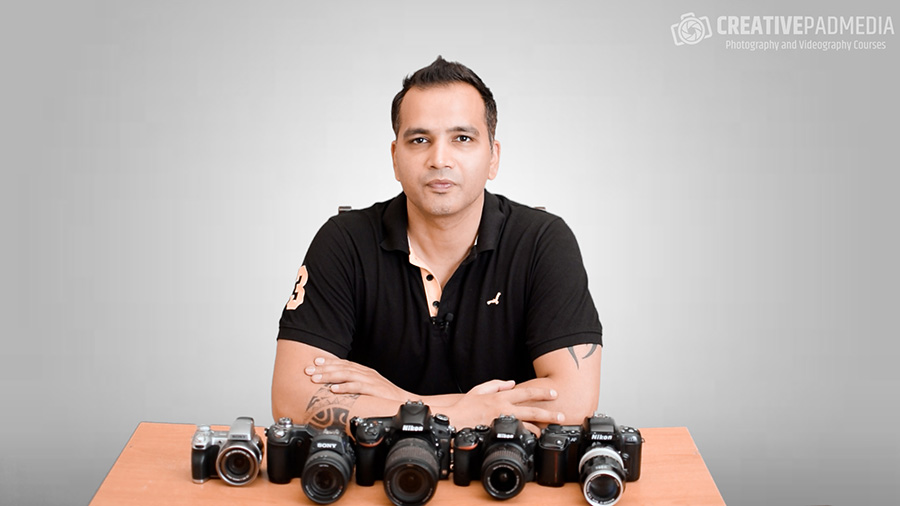How to Become a Photography Teacher
One of the most overlooked and under-rated aspects of being a photographer is the ability to earn income by teaching photography. As you are about to learn, becoming a photography teacher or an instructor is a great vocation.
Photography is a great subject to teach because it is as much technical as it is creative.
It’s one of the few hobbies where creativity and talent in itself is not enough. You also need to be good with the technical side of things which involves understanding concepts like exposure, dynamic range, metering and all the settings that go into shooting in the manual mode of a professional DSLR or Mirrorless camera.
This presents the perfect opportunity to break all this complexity into simple pieces of information and communicate it to a student who is feeling overwhelmed with the intricacy involved in photography.
At Creative Pad Media, I’ve been professionally teaching photography via workshops and online courses since 2013 and it’s been a very fulfilling journey. Currently my online courses have been downloaded by over 55,000 students in over 170 countries.
Before we proceed further, I wanted to let you know that I have a full fledged course on how to create and launch your online course, which has 22 hours of video content, that can help you get started in your own online coaching journey.
Now let’s get back to the topic.
Let me show you some of the images and videos from my photography workshops and online courses:




Since 2017, I really went into creating online courses and here’s a video that shows the kind of content I create:
So what steps should you be taking if you want to become a professional photography instructor? Let’s go though them:
1. Figure out what exactly you want to teach
Photography is a very vast subject. I currently have over 40 online courses related to photography and videography here on Creative Pad Media. I cover everything from general beginner oriented photography courses to more specific topics like Studio Photography, Flash photography, Editing courses and a lot more.
But that’s not how I started.
I started with beginner-only workshops and slowly moved towards the more advanced topics. Trying to teach everything together can result in overwhelm.
As an instructor what you have to understand is that you don’t need to be an expert or a PHD in photography. You only have one job – to break down the complexity involved in photography and convey it in a way that is easy for beginners to understand.
You will even find yourself getting better at photography as you teach. Learning via teaching other people is a great way to grow your expertise. As you get better you can start to teach more advanced topics.
You have to understand the concept of a niche. A niche means your sphere or field of teaching. For example, the very popular instructor Unmesh Dinda from Pix Imperfect has a very clear niche – Teaching Photoshop. He rarely goes into other aspects of photography. Another example is Sudhir Shivaram who only focuses on teaching wildlife photography.
A niche allows you to dominate one particular area without getting overwhelmed. In my own case my niche is a bit broader as my courses cover photography, videography and editing. But even within these, I mainly create courses which are oriented towards beginners. I rarely make a course which is too advanced. Also, this was possible only later on. Initially I only taught photography and editing for beginners. Later on I diversified into other topics.
So when you are starting out, don’t go too broad or you’ll get overwhelmed.
You can even choose one particular topic and go really deep into that. For instance, let’s say you like drone photography. You can take that one topic and go really deep into that first and make a course around it. Within this small niche, you can make content (blog articles and videos), online courses, informational webinars and physical workshops around all the topics related to drone photography, like:
- The basics of drone photography
- Advanced concepts and shooting methods
- Equipment related to drone photography
- Do’s and Don’t of drone photography especially when it comes to flying policies
- Editing for drone photography
- Shooting videos by using a drone
- Maintenance of a drone
Basically, you can become a complete expert in drone photography. It’s much easier to become an expert when you are focusing on one topic which has enough scope to go deeper into it.
Once your brand grows, you can always diversify into different topics.
Always remember people want to learn from experts and not from a jack of all trades. In addition to that, from your own point of view, it’s always easier to master one area rather than focusing your energy everywhere.
2. Figure out a method of teaching
When it comes to the different methods of teaching, you have plenty of options.
I started out by teaching physical workshops in the city of Pune in India. Then slowly I started to move towards creating online courses.
The benefit of online courses is that you have a global reach and are not limited geographically. You can also do both – teach via workshops and online courses.
When it comes to online courses, you have some options –
- Create online courses which contain pre-recorded videos
- Create e-books
- Create Live Webinars
I mainly use the first option for my online courses. Whenever someone buys my online courses, they get access to a set of pre-recorded videos instantly and they can watch and learn from these videos as per their convenience.
I created e-books till 2015 and it never really worked that great for me. There is no doubt that people prefer to learn from videos rather than text.
Live webinars can be good for teaching anything that is software related and can be shown on a computer, like teaching Photoshop. But I don’t think they will work for teaching general photography since showing the different functions and settings in a camera can be difficult using a webcam. I have never used webinars for teaching photography but I have seen some people offer webinar classes related to Lightroom/Photoshop editing.
3. Figure out a platform to host and deliver your online course
When it comes to hosting an online course, you need to to use a secure platform otherwise you can risk your course being pirated.
The most secure method of hosting your online course is to use a Learning Management Systeam (LMS) like Teachable, Thinkific, etc.
A LMS will allow you to upload your videos and then provide a login ID and password to the students who purchase your online courses. Once you student logs in, he or she can watch the videos.
The issue is that LMS companies charge you a monthly fee. So if you are unsure, initially you can host your courses on your website and once you know you are getting sales, you can move them to a LMS platform. But do remember that hosting your course on your website will make it vulnerable to piracy, unless you are using a membership plugin/software on your website which is not that easy to implement.
You can also use a course marketplace like Udemy to sell your online course. You do lose the ability set the selling price because Udemy courses usually sell when Udemy are running sales, so your courses sell when they are heavily discounted. But the good part is that the burden of marketing will taken away from you.
Personally speaking, I sell my online courses both on Udemy as well as on my own website because Udemy doesn’t have any exclusivity requirements.
4. Figure out a way to sell your online course
Creating and hosting an online course is one thing but marketing and selling it is another.
Unless you are a big brand name, it can be tough to get paid students.
This is where first of all you have to understand that you are not just planning to become a teacher. You are planning on becoming an Edupreneur. You want to create an entire online course business system that will help you achieve your objective of teaching as many students as possible and at the same time maximize your earning while doing it.
You need to learn the concept of a creating a marketing funnel and a selling system and then generating and sending targeted traffic to this system to make sales.
You will need get your hands dirty and learn how to turn your website into a traffic generating hub by implementing things like E-mail marketing software, paid ads, blog posts, social media posts and so much more.
This is where my course course called Create and Launch Your First Online Course in 5 Weeks can help you out, since it not only teaches you the process of creating your online course, but also how to market and sell it.
What are the benefits of teaching photography?
Teaching photography comes with a lot of benefits. Let’s look at some of them:
- You can earn a living by doing something you are passionate about.
- It makes you fall in love with photography more because every time you do photography yourself, you learn more and develop a focus towards doing it better so you can teach new things to your students.
- Teaching others also makes you develop new skills and turns you into a better photographer. Which means that it can open up new avenues for you when it comes to providing photography services yourself.
- You help improve your student’s lives by imparting your knowledge and making it easy for them to learn photography.
- Once your name grows, you can get opportunities like becoming an ambassador or a sponsor for big photography companies.
I hope this article helped you and I wish you all the luck in case you decide to become a photography teacher.








